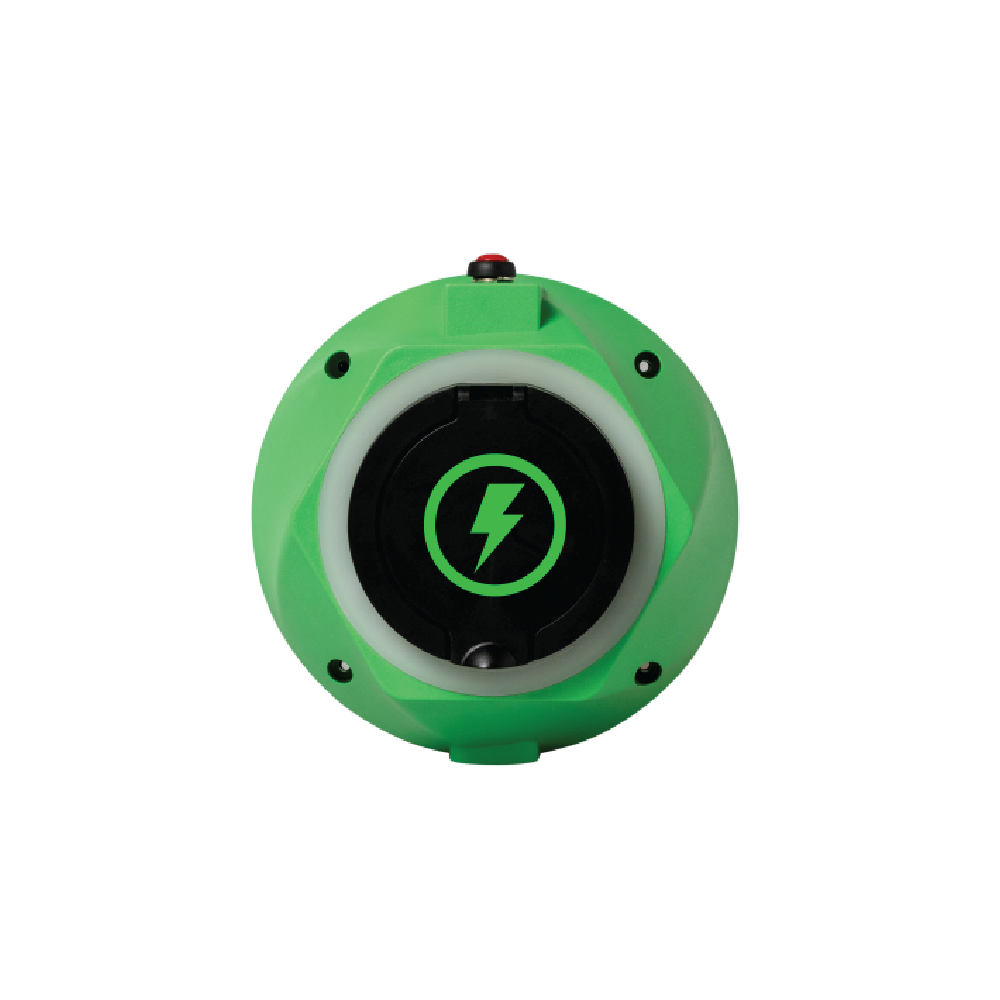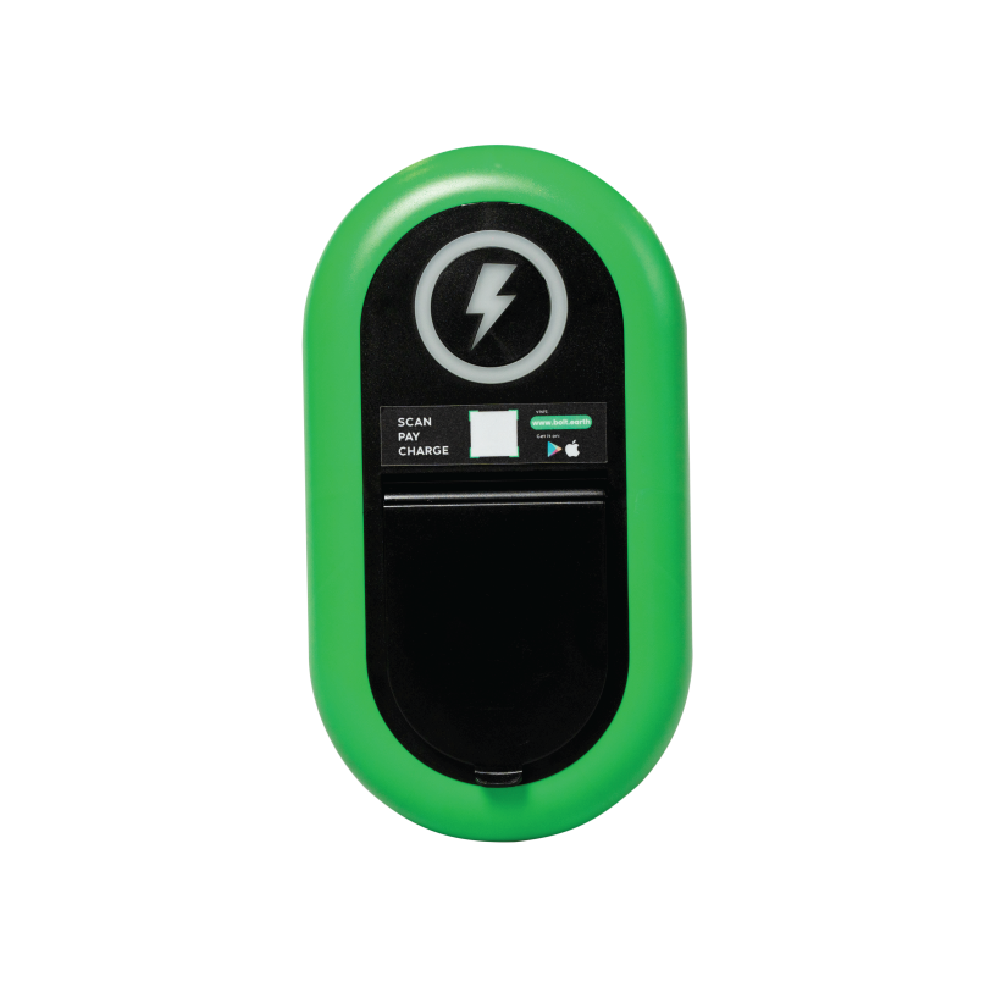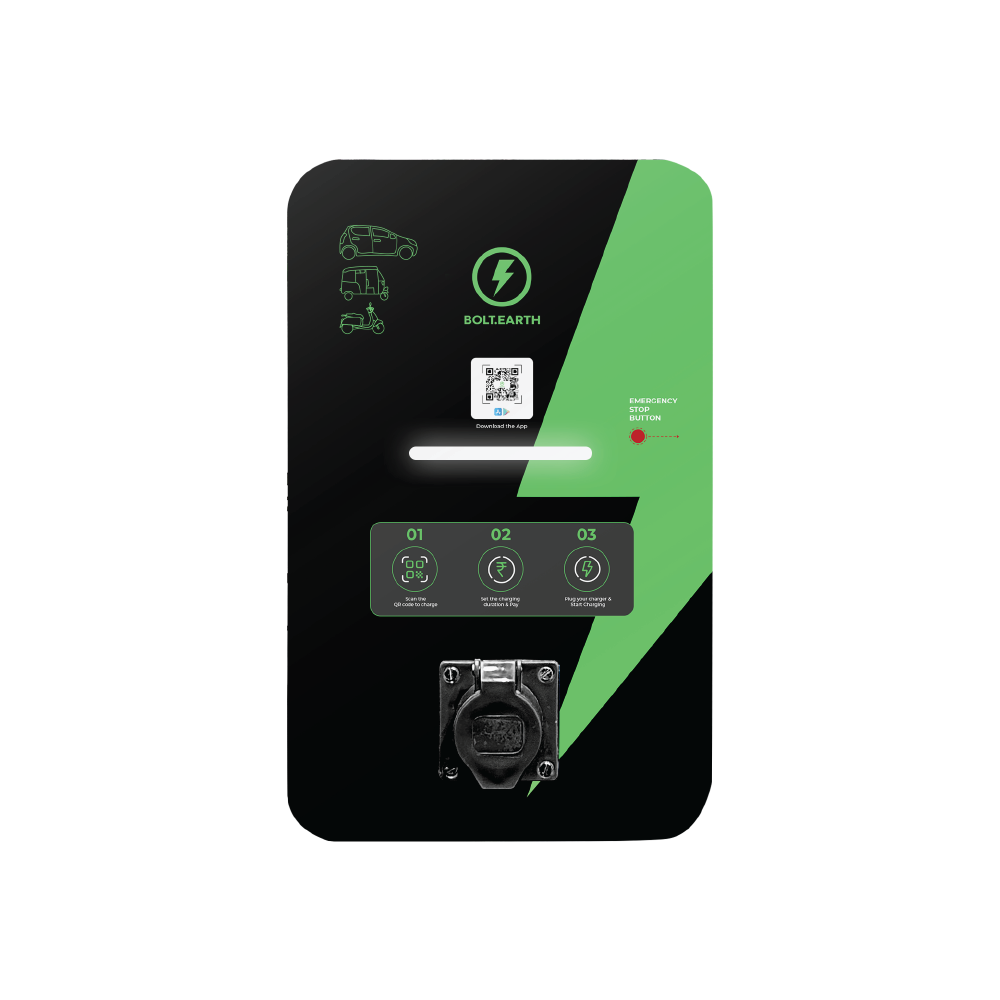Revolutionizing Commercial Mobility With OS in Electric Trucks & Vehicles
Raghav Bharadwaj
Chief Executive Officer
Published on:
19 Dec, 2023
Updated on:
06 Oct, 2025

Growing concerns over carbon emissions have led to a call for change in the commercial vehicle industry. Currently, commercial vehicles — most notably, commercial trucks with traditional internal combustion engines — are responsible for 80% of vehicular emissions. This emission level is unsustainable and poses a significant obstacle to countries reaching for Net Zero carbon commitments.
The push for commercial electric vehicles (EVs) is driven largely by automotive technology advancements, with a particular focus on operating systems (OS) that are responsible for a smooth and seamless connection between EV components and performance.
This article answers three key questions about the pivotal role of OS in transforming the commercial EV landscape:
- What challenges impede the development of OS in commercial vehicles, and what opportunities lie in their implementation?
- Which key OS features are best suited for electric commercial trucks and vehicles?
- How can OS revolutionize commercial mobility for EVs?
Challenges Impeding OS in Commercial Vehicles
Despite the increasing adoption of commercial EVs, several challenges need to be addressed for widespread acceptance. Alongside general challenges like limited infrastructure and high costs, OS-related obstacles including software incompatibilities, cybersecurity issues, and the impact of over-the-air (OTA) updates in vehicle operations can be viewed as an inconvenience and dampen adoption efforts across the commercial industry.
These challenges are even more profound in electric 3-wheelers due to their design. Because of this, their OS must support advanced safety features, support load management, and offer routing capabilities all while ensuring their stability when transporting heavy cargo.

Battery Technology Limitations
Commercial vehicles are expected to operate efficiently over long distances, and sometimes, in demanding weather conditions. Existing battery technology offers only a limited range, meaning frequent stops are needed to charge commercial EVs. Also, the fear of running out of power during transit, especially along routes with limited charging infrastructure, can discourage commercial players from adopting EVs in their fleets.
With these limitations, OS in commercial EVs must accurately estimate and communicate effective energy management. Battery management, space constraints, performance optimization, software updates, energy-efficient features, and user experience enhancements can also stand in the way of successfully implementing OS in commercial vehicles.
To address this concern, researchers are exploring solid-state batteries with higher energy density that can extend the driving range of commercial EVs. Similarly, fast charging solutions and energy optimization systems are emerging to reduce charging times.
Charging Infrastructure Constraints
In 2022, the world had a mere 2.7 million charging stations, with Europe having just 375,000 stations despite EVs accounting for 20% of all its new-car sales. This shortfall can be particularly impactful for commercial EVs that need to cover long distances.
Moreover, not all existing stations have fast charging capabilities. This can result in longer charging and waiting times, both of which can affect delivery schedules. Lastly, available public chargers may not be compatible with specific EV models, contributing to range anxiety concerns. The high cost of EV infrastructure development, coupled with trade-offs between range and payload capacity, can slow down OS development and adoption, particularly in the commercial industry.
Improving the availability of interoperable EV charging infrastructure is key to overcoming these complications. Fast charging technologies are being developed to shorten the charging time and improve the efficiency of EV charging infrastructure. This, in turn, can shorten driver downtime and increase the Return on Investment (ROI) for charging point owners. Standardizations across EV charging points can also remove barriers to EV charging. Government incentives, private-public collaborations, and peer-to-peer sharing of charging points are filling this infrastructure gap for now.
Motor Control and Power Delivery
Managing power delivery, especially in 3-wheeler EVs, presents a unique challenge. These EVs require precise torque distribution to ensure optimal performance. The OS must allocate power to the wheels effectively to balance stability with acceleration, particularly during sudden turns. Also, the OS must control energy recovery during braking and convert it into stored power to extend the EV’s range.
Bumps, potholes, and uneven terrain can suddenly affect vehicle stability. Given the variable road conditions, particularly for last-mile delivery 3-wheeler EVs, the OS must make real-time adjustments to ensure a smooth ride. OS in commercial vehicles must adjust power delivery to varying driving styles and driver preferences.
Researchers are exploring torque vectoring algorithms that allow the vehicle to adjust the torque in each wheel to improve its traction and stability.
While these challenges continue to exist, innovative solutions are being developed to refine the efficiency and adaptability of OS in commercial vehicles.
Innovative Solutions for OS in Commercial Vehicles
Over the years, EV OS has evolved significantly to optimize performance and enhance efficiency. Advancements in artificial intelligence (AI), machine learning (ML) technology, Internet of Things (IoT), and battery management systems have been instrumental in making commercial EVs a more viable option. Here’s a look at some of these technologies.
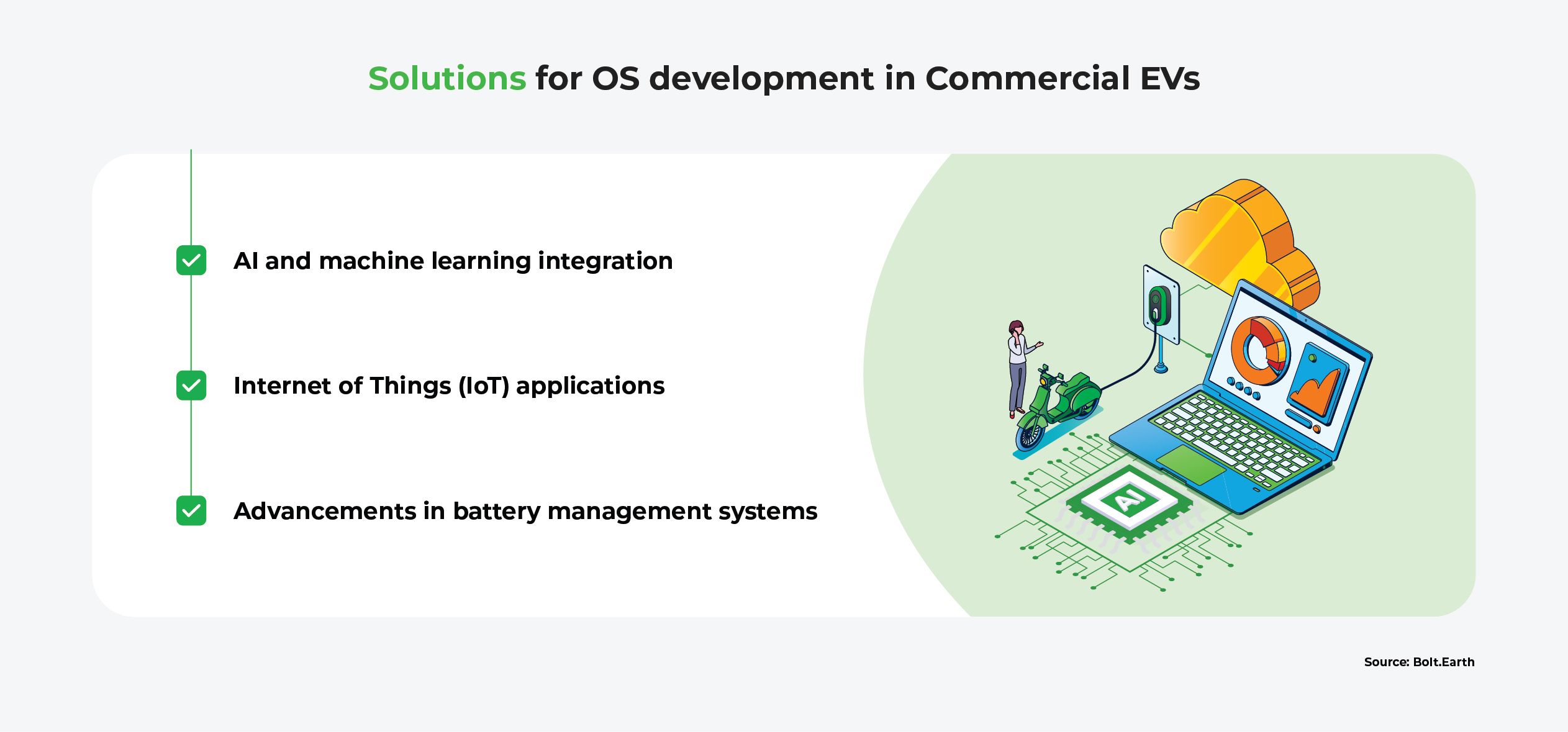
AI and Machine Learning Integration
The integration of AI and machine learning into EV OS is driving energy efficiency and predictive maintenance, leading to more reliable operations. These algorithms can analyze data from sensors in real time to make immediate adjustments in driving and power distribution. They can also predict traffic conditions and help with route planning for the efficient use of available energy. Above all, these technologies continuously monitor the health of vehicle components to spot issues before they become critical. This allows for scheduled maintenance, eventually lowering operating costs and avoiding delays.
Some examples of AI-based OS include:
- Tesla’s Autopilot uses AI to provide features like adaptive cruise control, lane centering, and self-parking.
- Waymo’s Self-Driving System provides an OS for autonomous driving, although it’s not available for commercial vehicles yet.
- NIO’s NOMI leverages an AI assistant that manages vehicle functions and enhances navigation for a personalized driving experience.
IoT Applications in OS
Internet of Things (IoT) sensors collect large amounts of data from various vehicle components like temperature, battery health, and performance metrics. It analyzes this information to provide insights into the vehicle’s condition and efficiency. It also enables the remote monitoring of commercial EVs to help fleet managers optimize vehicle usage and plan maintenance. Other information like driver behavior, energy consumption, and route efficiency help fleet managers to plan routes. Lastly, it can enhance the safety of EVs in adverse driving conditions.
Many companies are leveraging IoT to improve their operations, including:
- UPS employs IoT to monitor the condition of batteries and other components to extend battery life, reduce maintenance costs, and increase overall reliability.
- Geotab utilizes IoT connectivity to provide real-time data on vehicle location, speed, and diagnostics for fleet management. In turn, this allows companies to optimize routes and improve driver safety.
- FedEx uses IoT in its commercial EVs for route optimization and energy management to reduce fuel consumption and emissions.
Advancements in Battery Management Systems (BMS)
Battery management systems (BMS) have evolved to offer comprehensive battery monitoring while providing real-time data on cell voltage, temperature, and health. In turn, this provides precise control and optimization of the battery’s performance. Advanced algorithms manage the charge and discharge, leading to the efficient use of the battery. Furthermore, the exact estimation of the battery’s State of Charge (SoC) helps with range prediction and optimal power management.
The concept of swappable battery technology is also gaining popularity as it supports battery replacements. Though this technology is in the early stages, it holds the potential to minimize vehicle downtime and range anxiety concerns.
Collectively, these innovations and technologies are shaping the development of OS conducive to powering commercial EVs and are influential in advancing the EV industry.
The Current Landscape of Commercial EVs
In 2022, 101,499 commercial electric trucks were sold, and these sales are projected to increase to 1,067,985 trucks by 2030, signaling a compound annual growth rate of 34.2%. This growth can be attributed to a combination of factors, including government policies and regulations on emissions, as well as technological advancements in batteries and EV OS. By 2030, it is estimated that EV commercial trucks will account for 27% of the total truck market while e-buses will make up 82% of commercial transportation. This substantial expansion will largely happen in the Asia-Pacific region powered by orders from China, India, and Japan. Canada and the United States are also expected to see robust growth, followed by Europe.
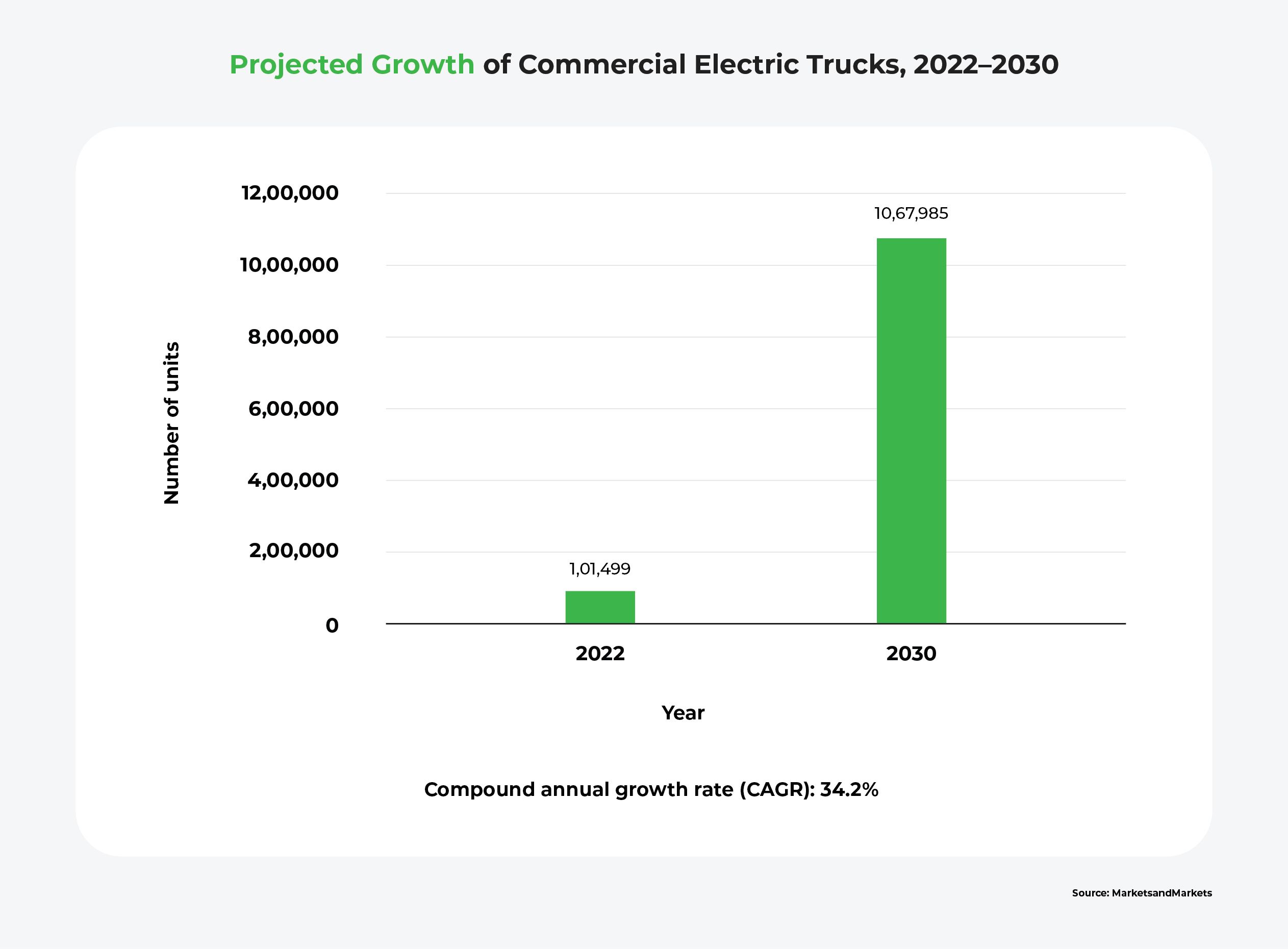
The major players in commercial EVs, including BYD, Mercedes Benz, Volvo, Ford, and Rivian, are catering to diverse needs across numerous industries — the food and beverages industry, state services like the United States Postal Service (USPS), and e-commerce companies like Amazon and Walmart.
Almost every major automaker in the world is investing heavily in innovative technologies that can improve the driving range of commercial EVs. Also, collaborations and partnerships pave the way for addressing the unique challenges of commercial EVs. With increasing demand for commercial EVs, OS in commercial vehicles will continue to play a bigger role in driving these vehicles.
The Significance of OS in Commercial EVs
Software-defined vehicles lie at the center of EV evolution, and commercial vehicles are no exception. Here, the OS is responsible for managing all aspects of the EV’s functionality. When an EV powers up, the OS takes charge of critical functions, integrating hardware, software, and data to ensure that every aspect of the vehicle is working as it should.
The OS also plays a continuous role in monitoring the battery to maintain sufficient power levels. It controls the distribution of power from the battery to the wheels, enabling the vehicle to move. Furthermore, it oversees specialized functions like regenerative braking, a process that captures energy during deceleration and uses it to charge the battery for an extended driving range.
In all, the OS is the driving force behind today’s commercial trucks and vehicles. Due to this overarching role, industry experts agree that developing and maintaining OS in commercial vehicles is necessary for evolving commercial transport. Consequently, several companies have taken the lead on this front.
The Case for OS in Commercial EVs
Some companies are ahead of the curve in implementing successful commercial EVs powered by sophisticated OS. One such company is Bollinger Motors, an American company that manufactures B4 and B5 commercial electric trucks. These vehicles are designed from the ground up, offering driver safety and fleet efficiency functionalities. They can also be custom-configured to meet the specific needs of their clients. Compatible with level 2 and level 3 chargers, they require approximately nine hours for level 2 and one and a half hours for level 3 to charge. These operations are supported by a patent-pending E-chassis.
Another example is Tesla Semi, the class 8 semi-truck built by Tesla and powered by its OS. This fully-electric truck can accelerate from 0 to 60 miles per hour within 20 seconds to help drivers maintain the highway speed levels. It also comes with advanced motor and brake controls to improve safety. Its design, including the centered driver seat, ensures that drivers have comprehensive visibility on the roads. As for fleet operators, Tesla claims that they can save $200,000 in fuel costs within just the first three years of ownership.
XOS Trucks is another notable company building electric trucks and their vehicles run on the proprietary Xosphere platform. They operate medium and heavy-duty trucks that can be customized for any use case including last-mile deliveries. Plus, its OTA updates make the upgrade process a breeze. It’s hard to find this battery modularity in similar trucks like Tesla or Bollinger Motors.
This industry progress points to an electrified future, powered by robust operating system optimization.
Impact of OS on the Future of Commercial EVs
Advanced OS holds the potential to drive improvements in the cost-effectiveness and performance of commercial EVs. Through optimized power management, improved route planning, and predictive maintenance capabilities, these operating systems reduce operational costs and increase environmental sustainability. As a result, more businesses are likely to embrace EVs for their commercial operations.
Bolt.Earth OS is a compelling example of an advanced OS that can reshape the commercial EV landscape. This innovative OS offers a seamless combination of AI, IoT, and data analytics to provide real-time insights into vehicles’ performance, energy consumption, and predictive maintenance. By enhancing efficiency and curtailing operational costs, Bolt.Earth OS can revolutionize commercial mobility.
To know more about how to revolutionize commercial mobility with OS, read the FAQ and Resources below!
FAQ
How do operating systems impact the performance of electric trucks and commercial vehicles?
Operating systems optimize power distribution and ensure that all components communicate and operate efficiently. They also ensure efficient energy utilization and extend battery life. Plus, they support OTA updates and protect data and systems from cyberattacks.
What are the benefits of integrating AI and IoT in operating systems for EVs?
AI optimizes energy usage, enhances predictive maintenance, and provides real-time insights into vehicle performance. IoT, on the other hand, enables remote monitoring, precise diagnostics, and safety enhancements. Together, AI and IoT make EVs more competitive, sustainable, and eco-friendly.
Will optimized operating systems lead to the widespread adoption of electric commercial vehicles?
An optimized EV OS can enhance efficiency, reduce operational costs, and improve overall reliability. They provide real-time insights for informed decision-making. When coupled with government incentives and stricter emissions regulations, operating systems are an obvious catalyst for commercial EV adoption.
Are there any regulations promoting the use of electric trucks in the transportation industry?
Governments worldwide are implementing policies, subsidies, and incentives to encourage the adoption of electric commercial vehicles. These regulations include tax incentives, emissions reduction targets, and stricter emissions standards. They aim to reduce greenhouse gas emissions, improve air quality, and transition to a more sustainable and eco-friendly transportation sector.
How do 3-wheeler EVs differ from traditional electric commercial vehicles in terms of operating systems?
3-wheeler EVs differ from traditional electric commercial vehicles in terms of operating systems due to their unique design and functionality. Operating systems for 3-wheelers require specialized algorithms for more efficient power management and real-time adjustments to varying road conditions. These systems optimize energy utilization, torque distribution, and braking, providing a different set of challenges and opportunities compared to larger commercial EVs.
Resources
IEA: Trends in electric heavy-duty vehicles
Discover the major trends in commercial vehicles here.
Diva: Modern Electrical/Electronic Infrastructure for Commercial Trucks
Explore innovative insights here.
Mecalux: Electric trucks and their impact on logistics
Learn about the impact of electric Trucks on the future of logistics here.
Driivz: Beyond Basics: What Growth-Oriented Providers Should Look for In EV Charging Management Software
Know what to look for while choosing EV software here.
McKinsey: The Economics of Fleet Electrification
Read the economics of electrification here.

![Top EV Launches in India 2025: Cars, Scooters and 3-Wheelers [+Bolt.Earth Charger Compatibility]](https://bolt-wordpress.bolt.earth/wp-content/uploads/Top-EV-Launches-in-India-2025_-Cars-Scooters
-3-Wheelers-Bolt.Earth-Charger-Compatible.jpg)
Dec 08, 2025 • EV Technology and Trends
Top EV Launches in India 2025: Cars, Scooters and 3-Wheelers [+Bolt.Earth Charger Compatibility]
Read More
